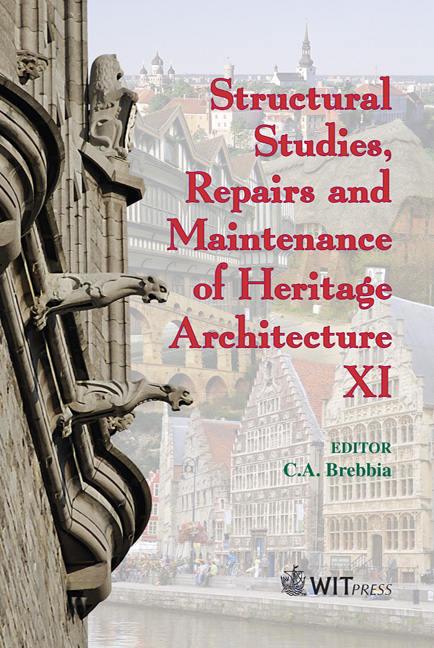Evaluation Of Lime Mortars For The Repair Of Historic Buildings
Price
Free (open access)
Transaction
Volume
109
Pages
12
Page Range
209 - 220
Published
2009
Size
530 kb
Paper DOI
10.2495/STR090191
Copyright
WIT Press
Author(s)
M. Abdel-Mooty, S. Khedr & T. Mahfouz
Abstract
The repair and rehabilitation of old historic structures involve a complex interaction of existing and new elements. Several difficulties are encountered by researchers and design engineers in this effort. Engineering judgment, perception, and experience have been used in many cases due to the lack of technical guidelines in a worldwide context. Consequently, a research studying different restoration mortars became a necessity. To fulfil this need, this research attempts to evaluate the performance of some of the currently used mortars and develop new ones. Several tests were conducted on lime based mortars using white cement, gypsum, lignin sulfonate, and silica fume that are used to enhance the mortars’ performance. These mortars were tested for compressive, tensile, and shear strengths at 7, 28, and 56 days from mixing. As a durability test, weight loss of mortar cubes subjected to wetting and drying cycles was measured. In addition, models of wall prisms were built using these mortars and tested under in-plan compressive loads to study the composite structural behaviour and bonding of stones and mortars. Based on the results of these tests, it was found that lime based mortars prepared using silica fume yielded the highest compressive, tensile, and shear strength. On the other hand, lime based mortars prepared using lignin sulfonate have attained the best results concerning wetting and drying cycles and the highest load capacity for the model wall, which resembled structural behaviour and bonding. Keywords: historic buildings, lime mortar, natural stone wall, restoration.
Keywords
historic buildings, lime mortar, natural stone wall, restoration




